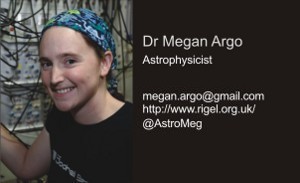The Dish

The Parkes radio telescope, New South Wales CREDIT: Megan
I'm currently sitting in the control room at the Parkes radio telescope (on the left) in New South Wales. The control room is in that tower you can see under the dish, and above me is 1000 tonnes of metal. Two thirds of that weight is in the azimuth track, mount, and counterweight, while the rest is in the dish structure itself. Every time the telescope moves to a new source you can hear the whir of the drives as they spin up. Like the Lovell, the sounds are quite distinctive and you get used to them after being here even a short time, it becomes obvious very quickly if something doesn't sound right.
Unlike the Lovell telescope or MERLIN, where you provide a source list and someone else does the scheduling and actual observing, observing with Parkes (or most Australian telescopes for that matter) actually means observing. You get control of the telescope, and have to know what to do when things go wrong: before you get left in charge of the telescope you have to do an OH&S induction and operator training. There's not a lot to it and if you've ever hung around a radio telescope before, it turns out that most of it is pretty familiar. And there are a lot of very competant people not very far away who know the systems inside out, which is very reassuring (especially when it's your first run!).
Unlike the Lovell, Parkes will park automatically when the wind gets too strong. There are wind monitors in both the control rooms but the control system, rather than the operator, decides when it's no longer safe to observe. Part of the operator training, therefore, includes learning what to do to unstow the dish using the MCP. Another thing that's quite different is the actual control system itself. The position of the dish is slaved to the master equatorial: a comparatively small equatorial mount which sits inside the central column of the telescope. The ME moves to the position requested by the schedule, and a laser system measures the error between that postion and the position of the 64-m antenna above it, and drives the telescope to match the ME's position. It's totally bizarre, but absolutely brilliant.
At the moment there's a 24-hour geodesy experiment running. Earlier this evening (when I took that picture) the sky was pretty clear. There was a bit of wind that has been on and off all day, so the telescope has been parked a couple of times. This evening there was a bit of excitement though. Shaun and I were finishing dinner in the lodge when we noticed flashes of lightening outside. So, we dumped our plates and went back up to the telescope where John was observing. We'd been there a few minutes when there was another large flash, and the lights dropped. They quickly came back on and we thought the generator must have kicked it, but it hadn't. Strangely, everything was still running perfectly happily. All the same, John went off to turn on the generator manually, just in case. It's all running quite happily now, on the generator just in case there's any more storm activity.
Tomorrow there is a receiver change, then the VLBI run starts.
Posted by Megan on Thursday 03rd Sep 2009 (14:23 UTC) | Add a comment | Permalink








Comments: